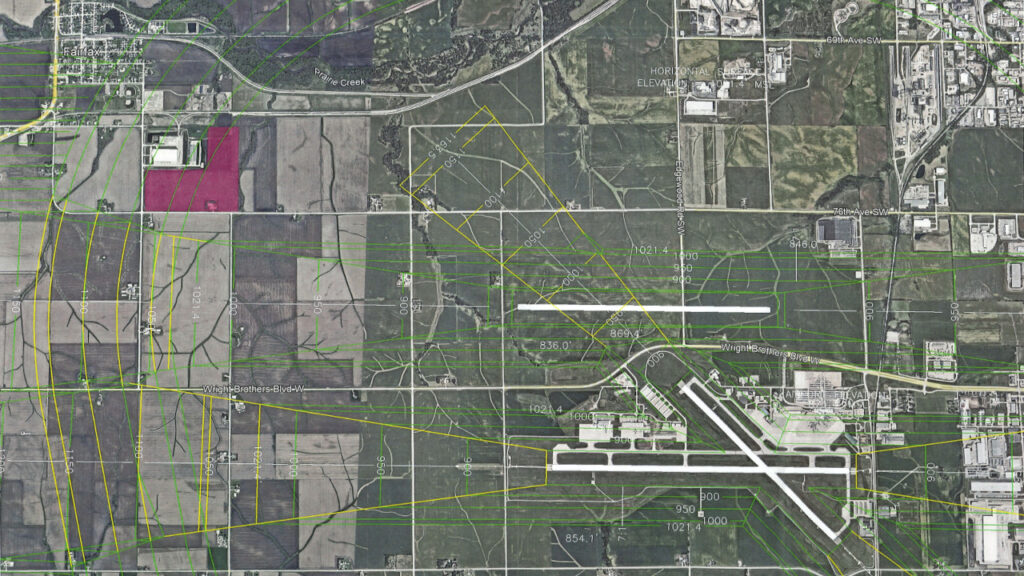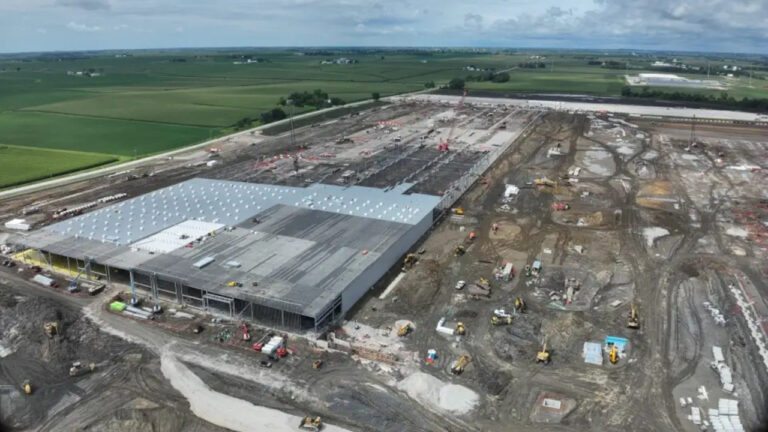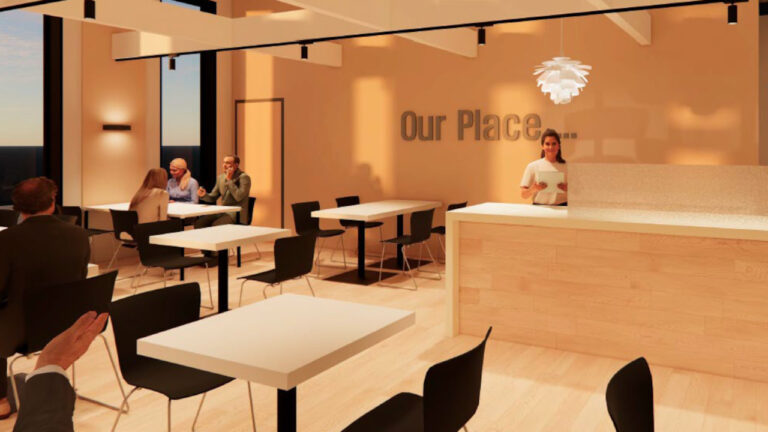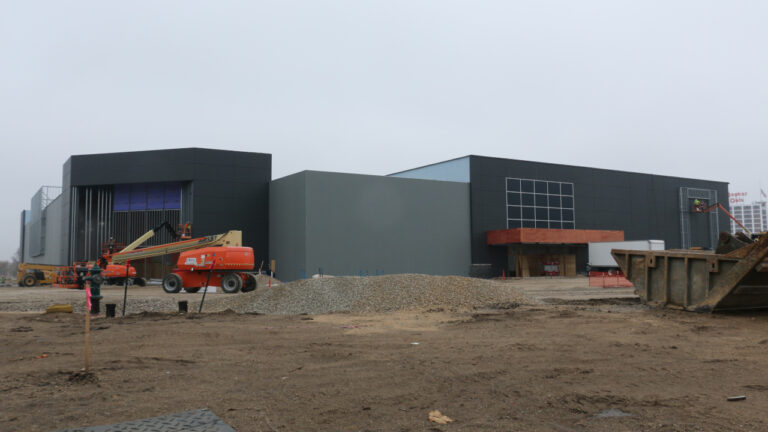The Cedar Rapids Airport Commission is expressing safety and proximity concerns about an Alliant Energy proposal for a new natural gas-fired power plant near Fairfax and just west of the Eastern Iowa Airport – a plant that could be considered for state regulators’ approval as soon as this fall.
Airport director Marty Lenss told the commission at its meeting Monday that he’s executed a task order with Foth Environmental and Infrastructure and a subcontractor to prepare a report on the impacts of the proposed power plant on airport operations, including airplane flight patterns and updrafts from heated air emitted from the plant.
He said the proposal first surfaced in a June 18 meeting with Alliant Energy officials, during which airport officials were “made aware that they (Alliant) were looking to site a gas-fired power plant in proximity to the airport.”
Mr. Lenss said he understood that Alliant is considering multiple sites for the new power plants, but that the site near Fairfax “is the one that appears to be favored by Alliant.”
The proposal hadn’t previously been made public by Alliant, but the site, near the Travero facility on the southeast side of Fairfax, is in close proximity to the two data center projects under construction in the Big Cedar Industrial Center.
In response to Alliant’s plans, Mr. Lenss said he sent a letter to Alliant July 14, stating reservations about the proposal “and asking to pursue one of the alternative sites.” He said Alliant officials mentioned two alternative sites, but didn’t identify them.
Airport officials met again with Alliant July 24, and learned that the proposed site is “approximately four miles from the main runway today, and less than three miles from the end of the secondary runway.”
The current proposal involves construction of a power plant with two combustible turbines and two condensing stacks, each estimated to rise 190 feet to 250 feet above ground level.
Airport commissioners reacted with alarm to Alliant’s proposal.
Commissioner Barry Boyer noted that previous members have been planning future airport configurations for decades, and encouraged a joint meeting to “work together to solve this in a way that becomes productive and not divisive.”
“I’m (not) just talking about the airport here,” Mr. Boyer said. “We’re talking about our communities. We’re talking about the access people have to our airport, and the ability to fly in and fly out efficiently and safely. This feels to me like a red line.”
Alliant issues statement on proposal
An Alliant spokesperson issued a company statement on the project Monday afternoon.
“We are in the early stages of site selection for a combined-cycle natural gas facility,” the spokesperson wrote in an email. “Our site evaluation includes the Big Cedar Industrial Center in Fairfax as a possible location. This potential facility underscores Alliant Energy’s ongoing commitment to a balanced energy approach that delivers safe, reliable and cost-effective energy to customers through the integration of traditional and renewable energy resources.
“At this time, we are working with the cities of Fairfax and Cedar Rapids and reviewing the proposed facility’s compatibility with airport operations,” the spokesperson said. “We intend to work with the airport to provide necessary information and continue to seek their input as we do with any local stakeholders on generation location and potential site decisions. Our timeline remains fluid to ensure we can conduct proper conversations with local communities and stakeholders.”
The spokesperson also indicated that the project isn’t tied to any particular development’s electrical needs.
“As for ‘potential customers,’ please recognize that we do not assign generation resources to specific customers,” the spokesperson wrote. “The electricity we produce is supplied to the grid, providing energy across our Iowa service territory. Alliant Energy is planning for the customers we currently serve and working to ensure we are supporting the needs of future customers, while enabling growth across the communities we serve.”
Public meeting likely next week
Mr. Lenss said airport officials are working to find a time for a special commission meeting that would bring representatives of Alliant and the airport together to outline the project and potential concerns, as well as receive any comment from members of the public.
That special meeting had not yet been scheduled as of Monday afternoon, but Mr. Lenss indicated it would likely be held sometime next week, beginning at the commission’s regular meeting time of 7:30 am.
Study request details
According to the study request, the analysis from Foth will include an evaluation of the existing runway configuration, as well as planned future development identified in the current Airport Layout Plan (ALP).
The airport currently has two runways. The primary runway, designated as 09/27, is 8,600 feet long and 150 feet. A planned future extension on the west end of the runway, to a total length of 10,000 feet, is identified on the current ALP.
The second crosswind runway at the airport, designated as 13/31, is 6,200 feet long and 150 feet wide.
And a third proposed third runway would be 7,400 feet long. Located just north of the existing 09/27 runway, that new runway would be used by commercial services and cargo operations. The runway’s future end threshold would be about 1,000 feet west of the existing 09/27 end threshold.
“The future third runway has been a project of previous commissions for 50-plus years,” Mr. Lenss said. “It’s been decades in the master plan. When that runway is built, this particular plant would be less than two miles from the end of (that) runway.”
After the July 24 meeting, airport leaders “ still agreed to do further research for the data,” Mr. Lenss said. “But it’s become very clear to us” that the site near the airport is “certainly preferred [and] strongly recommended” by Alliant.
“I can tell you from my professional recommendation that if the script was flipped, and the power plant was sited in this location today and we were talking about a new airport, we would not be siting this airport in its present location,” Mr. Lenss said. “There are some real concerns about the safety of operations.”
The study, which was approved by the commission at a cost of $67,060, is set to be completed within five months.
Mr. Lenss authorized the study prior to the commission’s approval at Monday’s meeting, saying it was important to move forward quickly.
“It is our understanding that there’s a desire (by Alliant) to go in front of the Iowa Utilities Commission by October (for consideration),” he said. “So we have very little time to analyze this – thus my execution of the contract and trying to get things moving as quickly as possible.”
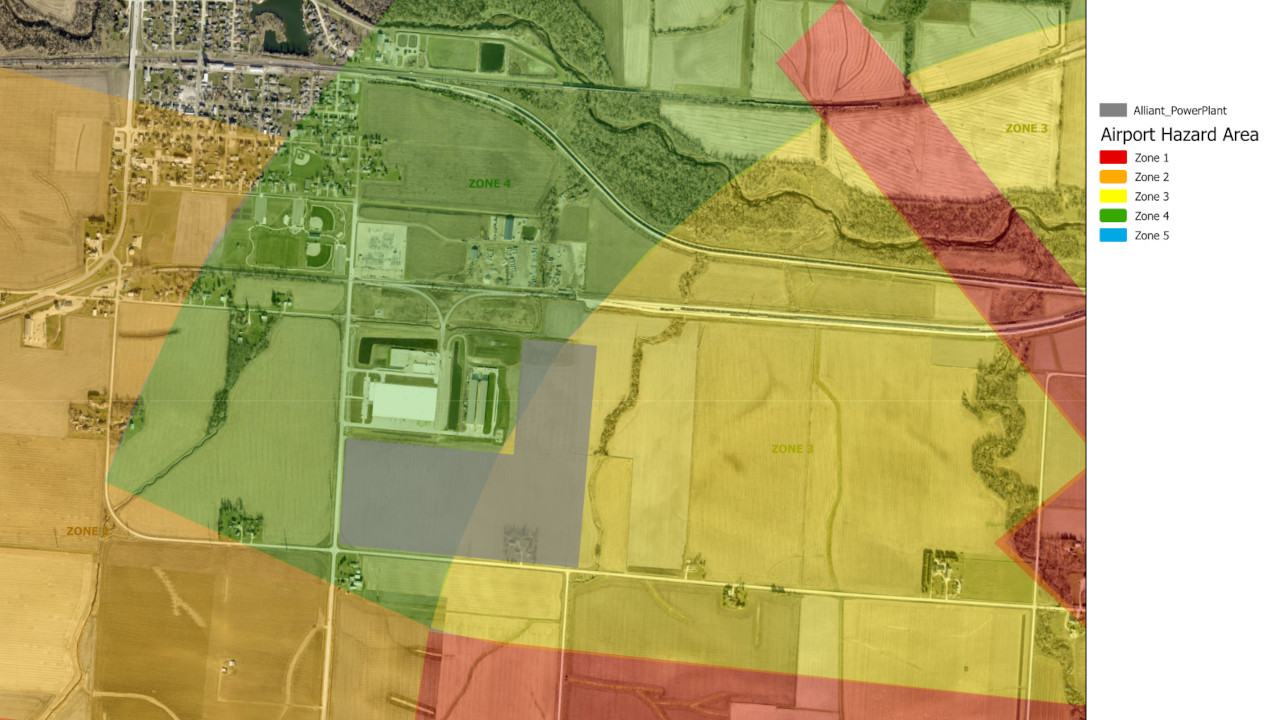
Airport director details concerns
In a follow-up interview with the CBJ Monday, Mr. Lenss identified three primary concerns with the proposed Alliant project’s location.
First, he said, the potential height of the towers themselves – up to 250 feet – are problematic in terms of flight patterns, specifically airport arrival and departure angles in relation to the runways themselves.
A second concern, he said, would be the possible formation of a vapor “plume” that could condense from the emissions from the stacks.
“Certain atmospheric conditions will cause that plume to dissipate quickly, but then there’ll be times when the plumes don’t dissipate quickly and stretch out for quite a ways and cause, essentially, a fog-like effect over the airfield,” Mr. Lenss said. “We have that today already with some of our adjacent property property owners, so we don’t need to add to that hazard and further reduce the operational efficiency of the airport.”
And third, he said, is the concern about the upward air velocity coming from the stacks. According to documents presented at Monday’s meeting, air temperature from the stacks is estimated to be between 210-220 degrees Fahrenheit when reaching the top of the stack. That rising air at high temperatures has the potential to impact the operation of aircraft in the vicinity of the power plant, the documents indicate.
“(Emissions) are at a speed and oftentimes a temperature that will create turbulent air above (the stacks),” Mr. Lenss said. “Departing aircraft that may be turning out to the west could potentially go right over the top of this turbulent air at critical stages of flight. So we’re concerned about safe airport operations, and at the end of the day, just making sure what Alliant needs to accomplish for economic development is done in a way that doesn’t negatively impact our ability to continue to be the economic engine for the region that we are.
“A project like the airport is a forever project, and a project like a utility plant is a 100-year kind of project,” he said. “We’re saying, let’s do this right so that we don’t negatively impact our future ability to expand, for us or the utility plant.”
Mr. Lenss also addressed the question of whether airport flight patterns could be altered to avoid conflicts with the proposed power plant.
“The FAA controls the airspace,” he said, “But any rerouting of traffic ultimately ends up reducing the operational efficiency at the airport, because we have these artificial impediments in place that could have been avoided. If you were a pilot of an aircraft approaching that runway in poor weather or windy conditions, you’re very focused in the cockpit, and there’s a lot of tasks going on to keep that airplane on center line. When you fly in bad weather, the airplane gets bounced around a little bit, and pilots are always correcting. It would not take much to push an aircraft over this power plant location, potentially hitting that turbulent air when the aircraft is configured for landing with flaps down, gear down, low and slow.
“We need to keep that airspace on approach to that runway protected,” he added, “and you cannot move that final approach to the runway. It is where it is, at that distance out from the airport. The only way to move that approach to that runway, at being a mile out, is to move the runway.”
Mr. Lenss said the airport hopes to work with Alliant on choosing an alternative site.
“It’s pretty clear to us, at the end of the day, it’s really a mutually bad location,:” he said. “And when you think of plume studies, it’s really hard to be accurate, because they may be changing five years from now. Will it be better for plumes or worse for plumes? The only one that’s at risk in all that is the airport and safe airport operations. If we are a partner in economic development and an economic driver for the region, why would we do this?”


